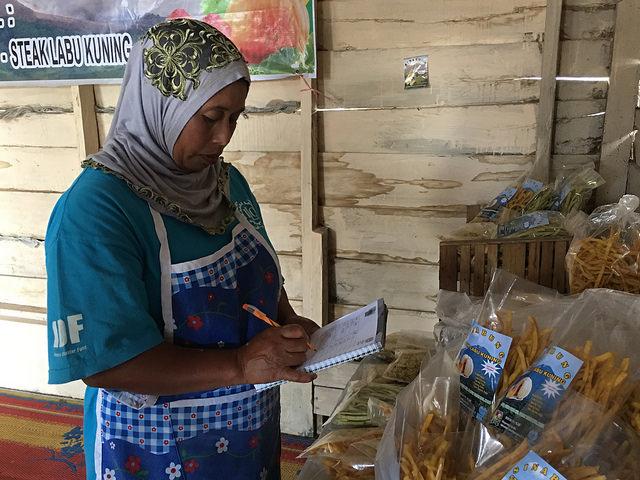The Asia–Pacific gender-parity imperative
Posted By Oliver Tonby and Anu Madgavkar on June 18, 2018 @ 12:30

Gender equality offers a sizeable economic opportunity for any country. A government that hopes to achieve strong growth without tapping into women’s full potential is essentially fighting with one hand tied behind its back.
In fact, new research [1] from the McKinsey Global Institute (MGI) finds that Asia–Pacific economies could boost their collective GDP by $4.5 trillion per year by 2025, just by accelerating progress towards gender equality. That would be the equivalent of adding an economy the combined size of Germany and Austria every year. The opportunity is especially large for India, where GDP would grow by as much as 18%.
Gender equality contributes to growth in three ways. According to MGI, 58% of the gains in the Asia–Pacific region would come from raising the female-to-male ratio of labour-force participation, 17% from increasing women’s work hours, and the remaining 25% from having more women working in higher-productivity sectors.
But equality at work goes hand in hand with gender equality in society. While there have been notable advances in girls’ education and health, women across the region remain subject to traditional attitudes that define their primary role as being in the home. As a result, women often lack access to the financing needed to start or expand a business, and to the training needed for the modern labour market.
To be sure, tackling gender inequality is a complex, long-term challenge that requires broad social engagement. But there are five areas in the Asia–Pacific region where governments, companies and non-governmental organisations could start to make meaningful progress.
The first is women’s participation in higher-quality jobs. While women currently account for half of the region’s population, they contribute just 36% of its GDP. But GDP does not account for the unpaid work that they do in the home, which could conservatively be valued at an additional $3.7 trillion of economic output.
Globally, the value of women’s unpaid work performed is three times higher than that of men, whereas in the Asia–Pacific region, it is four times higher. In some cases, the time that women spend on such tasks may be a personal choice. But true equality of opportunity eludes too many women who want to earn money outside the home.
This problem can be addressed in a number of ways, starting with more flexible workplace policies, affordable childcare, and expanded skills training, particularly in STEM fields (science, technology, engineering and mathematics). Moreover, in countries such as India and Indonesia, investment in infrastructure and transportation can reap dividends by connecting more women to productive work opportunities.
A second priority is to address women’s underrepresentation in business leadership circles. Globally, there are fewer than 40 women for every 100 men in leadership positions (including in politics), and in the Asia–Pacific region, that figure falls to around 25. Though the share of women sitting on company boards across the region did double between 2011 and 2016, from 6% to 13%, it remains far too small.
Breaking the Asia–Pacific region’s glass ceiling will require dismantling several barriers, including cultural expectations that women should prioritise childcare over their careers, a lack of suitable or affordable childcare, unconscious bias in the workplace, and a scarcity of role models and sponsors. But, most critically, too few companies in the region offer flexible working options.
A third priority is to improve women’s access to digital technology, which can open countless economic (and social) doors—including into finance. In fact, women have already begun to thrive in some of the region’s burgeoning digital industries. In Indonesia’s largest online marketplace, women-owned businesses account for 35% of total revenues. And in China, women found 55% of new internet businesses.
Building on these successes will require more training for women in the use of digital technologies. In Asia’s booming internet market, digital technologies could be a double-edged sword: if the gender gap is not closed, women will be left on the sidelines of the technology-driven revolution sweeping the region.
A fourth priority is to change social attitudes about gender roles. The traditional view that women belong in the home is arguably the largest barrier to women’s advancement in both society and the workplace.
The World Values Survey’s findings [2] on this issue between 2010 and 2014 are revealing. Across the Asia–Pacific region, 44% of respondents said that men make better leaders than women. And 70% of Indian respondents—compared to just 21% of Australian respondents—agreed with the statement: ‘When a mother works for pay, the children suffer.’ Leaders in government, business, the media and individual communities need to work together to change such views.
The final priority is to pursue more regional collaboration to achieve gender equality. Public and private initiatives tend to work best when they are tailored to specific communities and countries. But regional partnerships that are established around shared goals could give national and local efforts more momentum.
For example, Asia–Pacific countries could come together to provide more financing for gender-equality initiatives, and to encourage more gender-based investment and budgeting. And, more broadly, governments could do more to share knowledge about which approaches work best.
The Asia–Pacific region is home to some of the world’s fastest-growing and most innovative economies. It is forging an exciting new future, and assuming an ever-greater global role. Yet women are not playing an equal part in this drama, as many leaders have come to realise. Now is the time to accelerate progress toward gender parity, and to women’s power to deliver growth and improve social wellbeing.
Article printed from The Strategist: https://aspistrategist.ru
URL to article: /the-asia-pacific-gender-parity-imperative/
URLs in this post:
[1] research: https://www.mckinsey.com/featured-insights/gender-equality/the-power-of-parity-advancing-womens-equality-in-asia-pacific
[2] findings: http://www.worldvaluessurvey.org/WVSDocumentationWV6.jsp
Click here to print.